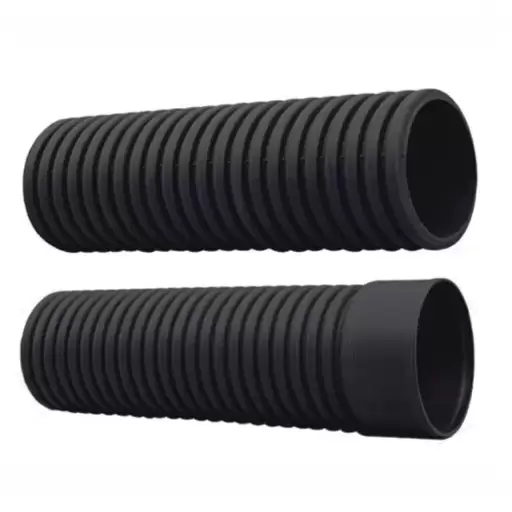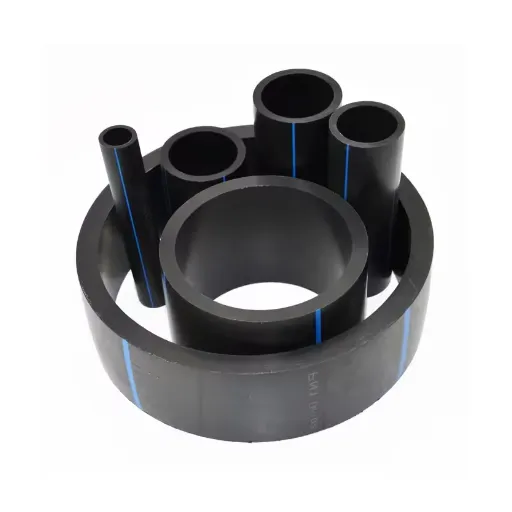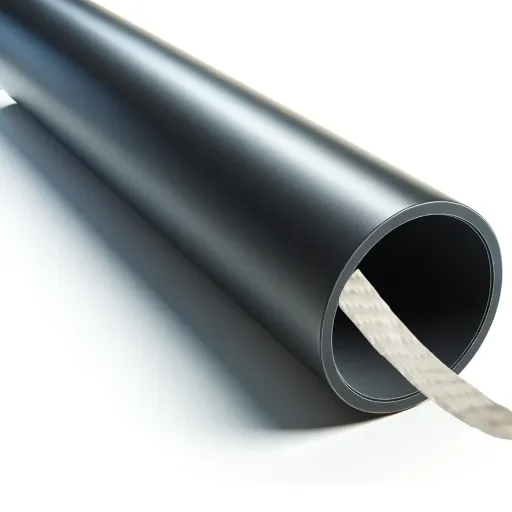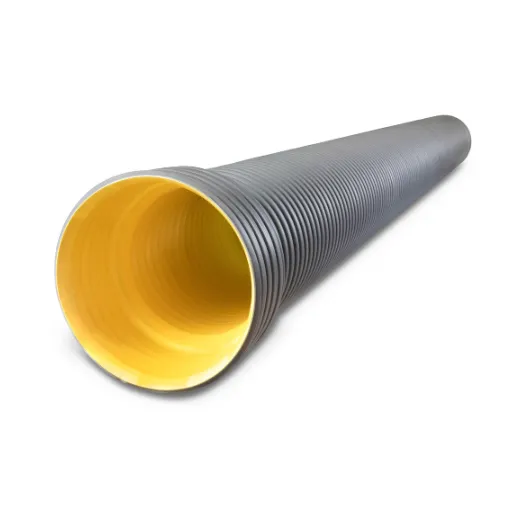High-Density Polyethylene (HDPE) sanitary sewer pipe has revolutionized modern wastewater infrastructure, offering an unmatched combination of durability, flexibility, and efficiency. As municipalities and engineers face increasing demands for sustainable and cost-effective wastewater solutions, HDPE pipes have emerged as the go-to choice for sanitary sewer systems. This article serves as the ultimate guide to understanding HDPE sanitary sewer pipe, exploring its unique properties, key advantages, and vital role in modern infrastructure. Whether you’re a project manager, engineer, or industry professional, this comprehensive guide will equip you with the knowledge needed to make informed decisions about utilizing HDPE in your wastewater systems.
What is HDPE Sanitary Sewer Pipe and Why is it Used for Wastewater Systems?
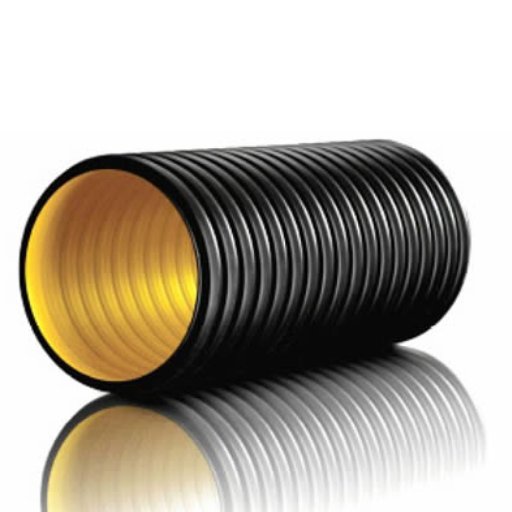
Understanding High-Density Polyethylene Pipe for Sewer Applications
The unique combination of properties of High-Density Polyethylene (HDPE) makes it exceptionally appropriate for use in sanitary sewer pipes. Thermoplastic HDPE, for instance, comes with a variety of benefits like a high strength-to-density value, resistance to chemicals, and strong flexibility. Corrosive pipe environments, such as storage of dangerous chemicals and acidic wasteful byproducts, are structural integrities of HDPE pipes. They also severely compromise the sewer system’s structural pipes.
The other most significant feature of HDPE is its strength and ductility, which allows it not to crack under pressure. Furthermore, it possesses low permeability, which is vital in preventing contaminant seepage. This is particularly important for the stability and cleanliness of a wastewater management system. In addition to all these features, HDPE has a smooth surface internally, which helps reduce friction and increase water flow to eliminate clogs and blockages.
Today’s uses of HDPE pipes include the use of heat fusion which forms effortless and water-tight unions. Unlike traditional piped systems, these systems are not as susceptible to numerous traditional assimilated weaknesses, so issues like joint displacement and root intrusion are completely negated. Along with its low density, which makes installation, transporting, and handling easier, all resulting in reduced labor and costs, the same can be said about HDPE pipes.
HDPE sanitary sewer pipes use these properties to quickly become the frontrunners when it comes to long-lasting and environmentally friendly wastewater solutions.
Key Properties of HDPE Sewer Pipe Compared to PVC and Ductile Iron
- Durability and Life Expectancy: The exceptional strength HDPE pipes possess against corrosion, chemical degradation, and abrasion is unmatched. HDPE maintains its structural integrity for decades and is often managed to outlast a 100 years of service due to environmental stress. Unlike ductile iron, which rusts over time, or PVC which becomes brittle, HDPE pipes endure everlastingly.
- Flexibility and Joint Strength: Undoubtedly, the most significant feature of HDPE over PVC and ductile iron is its exceptional flexibility. HDPE pipes can perform under ground movement, seismic activities, and temperature changes without failing. In addition, the thermal fusion welds of HDPE pipes create a ribbed, leak-free system. Unlike gasketed joints from PVC and ductile iron systems, which have withstood the test of time, these joints eliminate the possibility of leakage.
- Efficiency: With regards to pumping fluids, HDPE pipes possess an internal surface that is smooth and has a low angular coefficient of friction, thus rendering them less resistant to flow. While they face competition from PVC and ductile iron, HDPE will always claim the title HDPE allows for lesser chances of deposit build up or internal scaling which maintain smoothness over time.
- Chemical Resistance: Unlike ductile iron and PVC, HDPE demonstrates superior endurance against an extensive array of chemicals such as acids, compounds found in bases, and organic materials found in wastewater and soil. This resistance minimizes the risk of degradation in challenging applications, enhancing ductile iron’s and PVC’s suitability for sanitary sewer systems.
- Lightweight and Cost-Effective Installation: The lightweight nature of HDPE translates to lower fuel costs and easier movement of heavy equipment. Heavier ductile iron pipes translate to more costly fuel while also requiring more labor to install. Even though PVC’s lightweight nature reduces fuel costs, operators must take great care when handling clear pipes to avoid damaging them. Overall, these factors make HDPE a more appealing choice for large-scale projects.
- Environmental Impact: The recyclability and longer lifespan of HDPE offer benefits from a sustainable standpoint because they result in a lower environmental footprint. Compared with PVC, which faces scrutiny due to the use of chlorine-based materials in its production, HDPE is often regarded as a greener option. Ductile iron pipes do highlight some advantages, but the energy needed to manufacture these pipes is a detriment, which is why HDPE holds the advantage in environmental sustainability.
Considering these properties, it is underscored why their increased preference in modern wastewater infrastructure projects is evident as HDPE sewer pipes surpass PVC and ductile iron in durability, flexibility, hydraulic performance, and cost-effectiveness.
How HDPE Performs in Municipal or Private Sewer Systems
The benefits of High-Density Polyethylene (HDPE) are evident in its performance in both public and private sewer systems because of its unique properties. Its robust corrosion resistance protects it from long-term structural damage during harsh exposure to acids, alkalis, or other aggressive agents typical in wastewater. This enables efficiency in cost and time, significantly reducing maintenance works and downtimes when compared to older materials like ductile iron or concrete.
Another feature is the great flexibility of HDPE, which makes the material allows pipes to withstand civil movement like earthquakes and soil settlement without the risk of cracking or leaking. This leads to reduced spending for costly repair works while ensuring enhanced infrastructure durability. Also, the great hydraulic performance from reduced internal friction enables higher flow efficiency in pumping, reducing energy consumption while improving energy efficiency in wastewater transport, which is very critical for maintaining sewer systems.
Furthermore, the latest technology for heat fusible mechanical joints allows greater reliability in the entire system by providing leak-proof connections. Improved tensile strength of fusion-welded HDPE pipes, when compared to regular mechanical joints, means there are no other exposed areas that can develop leaks or fail, thus eliminating weak points. These advancements make HDPE the material to rely on for gravity sewers and force main applications where performance, dependability, and durability are critical.
Overcoming the problems traditional systems pose, HDPE emerges as a cutting-edge solution and an answer to the ever-increasing needs of sewer systems requiring sustainable and reliable infrastructure.
What Are the Benefits of HDPE Pipe for Sewer and Wastewater Applications?
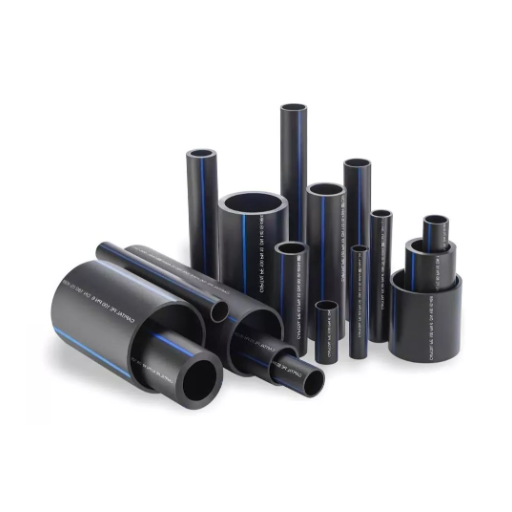
Exploring HDPE Pipe’s Superior Chemical Resistance in Sewer Environments
It is no secret that HDPE (high-density polyethylene) is used mainly due to its exceptional corrosion resistance. This makes it very effective in sewer and wastewater applications where many corrosive chemicals are in use all the time. Unlike older construction materials like concrete or metal, HDPE withstands a multitude of acids, bases, and organic compounds that are commonplace in industrial and civic wastewater systems. This ensures that the pipe does not degrade or corrode over time, unlike other materials, such as hydrogen sulfide, which can be very aggressive.
Moreover, the non-reactive surface of HDPE minimizes scaling, encrustation, and biofilm development, enabling it to maintain the flow capacity and require little to no maintenance. Research shows that HDPE withstands tremendous acidic or alkaline environments in a pH scale from 1.0 to 14.0. This is especially helpful in gravity sewer systems where there are frequent chemical surges and changes in the composition of the effluent. Also, the ability of HDPE pipes to resist dissolution and cracking under severe conditions like these increases the durability of sewer infrastructure, which in turn, reduces operational costs in the long run.
This is exactly the reason why HDPE has become the benchmark when it comes to modern wastewater management. It remains reliable and sustainable while effectively resisting corrosion during lengthy periods of operation.
Leak-Free Joints and Fusion Technology in HDPE Sewer Systems
An innovative element of High-Density Polyethylene (HDPE) sewer systems is their use of advanced fusion techniques to achieve leak-free connections. Unlike traditional materials that use mechanical fittings which are prone to wear and failure over time, HDPE uses heat fusion methods such as butt and electro fusion to form joints. These techniques of fusion make the ends of the pipes and joints into monolithic pipelines, which have no weak points that can allow for leakage.
Research shows that the fusion joints in HDPE pipelines are as strong, if not stronger, than the pipe itself. This makes the pipeline systems free from the risk of infiltration or exfiltration that can undermine the integrity of the system. Also, these processes are designed to guarantee resistance against root intrusion, a common source of leaks for conventional sewer materials. Fusion welded joints have proven resilience against high pressure and stress, making them suitable for conditions of changing loads, seismic activity, and other shifting environments.
By using fusion technology, engineers can create sewer systems that reliably reduce water loss and prevent contamination of nearby ecosystems. This marks a new milestone in the wastewater infrastructure domain that focuses on ‘outstanding performance and durability’.
HDPE Pipe’s Extended Service Life of 100 Years in Wastewater Applications
The use of pipes manufactured from High-Density Polyethylene (HDPE) has increased in the field of wastewater management because of their outstanding efficiency and reliability. In comparison to other materials, Durable Pipes are manufactured (or ‘rated’) for withstanding chemical deterioration, physical wear, and microbial processes, which makes them suited for wastewater systems that operate for long periods. HDPE pipes last for well over a century (100 years) when they are properly installed, maintained, and operated.
An important attribute of HDPE is that it is chemically resistant against a majority of the attack mechanisms found in wastewater. These include acidic and alkaline materials found in sewage. Another feature of its non-porous surface is that it minimizes scaling and sedimentation, which are factors that contribute to increasing the likelihood of material weakening. Moreover, when compared to other chemicals, robust HDPE flexibility allows it to withstand bending stress, which lowers the tendency for cracks and fatigue under changing loads.
By improving, Advanced production has also enhanced the HDPE material by increasing UV (ultraviolet) resistance and thermal aging. These advancements guarantee that HDPE pipes can remain effective and structurally robust for a wide range of environmental situations, verifying that cost-efficiency and environmental sustainability for contemporary wastewater construction projects.
How to Select the Right HDPE Sewer Pipe for Your Wastewater Project?
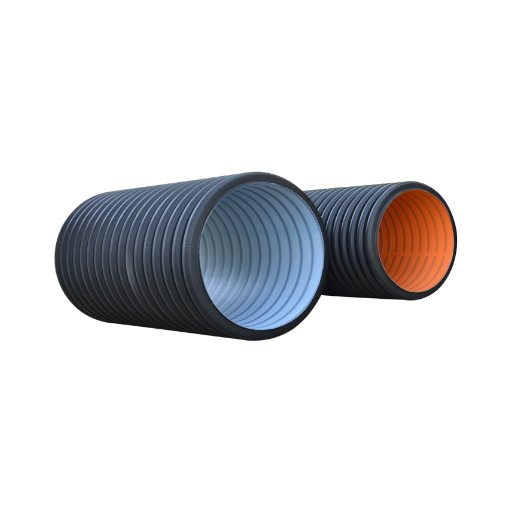
Understanding HDPE Pipe Diameter and IPS Options for Sanitary Sewers
Choosing the proper Pipe diameter and Iron Pipe Size (IPS) for sanitary sewer systems needs special attention concerning operational efficiency as well as engineering compliance. All HDPE pipes come in various diameters from ½ inch to 65 inches, making them suitable for residential projects and big municipal systems. The pipe’s diameter directly correlates to its flow capacity, which is determined by anticipated wastewater volume, peak flow rates, and sewer system gradient.
IPS or Iron Pipe Size is a standardized sizing system that conforms to industry criteria for both pressure and non-pressure applications. IPS sewers have preeminent fittings and withstand severe loads thus making them the most sought after for sanitary uses. The diameter selection and IPS specification must be planned for a logistics flow and must take into consideration population changes, advanced waste requirements, or cross-industry environmental sustainability requirement.
Civil engineers must take into account the unique characteristics of a site, including the soil type, the land’s shape, and the expected usage of the area when calculating the dimensions of the pipe. Having access to powerful modeling tools like hydraulic modeling software greatly boosts the precision with which systems are planned. This ensures that the performance of the pipeline throughout its life is optimized by analyzing flow rates and pressure dynamics. Selecting the proper materials and methods reduces maintenance costs and system failures, all of which support strong and eco-friendly wastewater management systems.
Choosing Between HDPE and Ductile Iron Pipe for Sewer Force Mains
Selecting an appropriate material for sewer force mains has a decisive impact on the project HDPE (high-density polyethylene) and ductile iron pipelines. To make the right choice, it is necessary to consider the material properties, application requirements, and the anticipated maintenance needs of each option over an extended period. HDPE is commonly praised for its flexibility, low corrosion resistance, non-redundant joints that lower leakage rates, and extensive suitability across projects. Chemically aggressive soils and reactive environments are of no concern to HDPE, as it is lightweight and does not react to harsh chemicals. Furthermore, HDPE permits lower overall project costs due to the easy transportation and installation.
On the flip side, ductile iron pipes may lack some of the HDPE qualities, but they provide unmatched tensile strength and pressure resistance, which makes these pipes highly suitable for high-pressure and ultra-heavy-duty workloads. Its rigidity ensures the pipe maintains structural integrity under significant external stresses, such as those caused by heavy traffic or unstable soil. While it is true that it is easily corrodable and results in disaster if unchecked, in operational Spitfire environments, advanced protective linings like cement mortar and epoxy coatings extend the lifespan of the pipe by mitigating corrosion.
Finally, it needs to be mentioned that each of the identified options has their benefits and draw backs. Whatever design choices are made, it is critical to ensure proper monitoring of lifecycle costs, operational pressures, soil conditions, installation environment, corrosion, degradation, and impact on nature.
What Installation Methods Work Best for HDPE Sanitary Sewer Pipe?
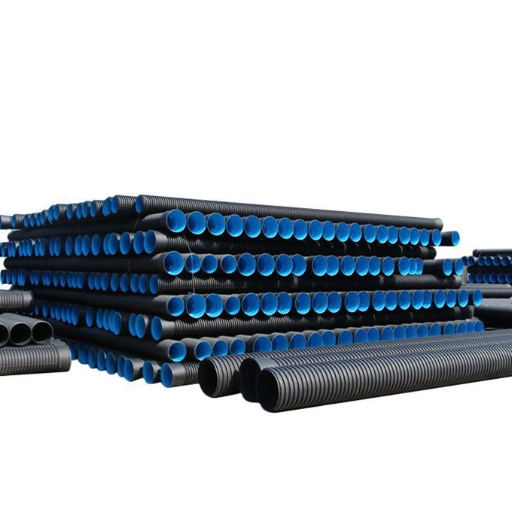
Pipe Bursting and Trenchless Technologies with HDPE Pipe
The use of pipe bursting and other trenchless methods has changed how sanitary sewer systems are installed and repaired, particularly via the use of HDPE (High Density Polyethylene) pipe. Pipe bursting is defined as the process of replacing an existing pipeline by breaking, or “bursting,” the old pipe while inserting a new pipe of the same or bigger size simultaneously. This method is best suited for the replacement of obsolete or eroded sewer pipes in the city because of the need to maintain the ground structure on the surface as much as possible.
The use of HDPE pipes is particularly advantageous for pipe bursting because of the physical attributes mentioned above. The pipes’ greater resistance to corrosion and exposure to chemicals also helps to reduce operational strain during deployment. The lighter weight of the material increases the ease of handling during installation. Additionally, the is outstanding compatibility to corrosion and chemicals increase the lifespan of the procured pipe. Most importantly, HDPE fused joints form a seal, which when used in sanitary sewer systems is essential to preventing contamination in hygienic sewers.
The most recent developments in trenchless technology have facilitated the integration of HDPE pipes even further. For example, guided pipe bursting employs precision enhancers that ensure equipment is aligned properly; this increases the reliability of the installations. Some trenchless procedures, such as pipe bursting, can provide up to 40% more cost efficiency than conventional open-cut excavation methods considering the cost of soil removal, disposal, and restoration to the surface.
In summary, the synergy of HDPE pipes with pipe bursting and trenchless technologies provides an elegant and robust answer to the growth of ever-increasing infrastructure problems while minimizing the damage to the surrounding environment and communities. These methods, if applied properly, allow for efficient, durable, and environmentally sustainable sewer rehabilitation projects.
Proper Fitting Installation for HDPE Sewer and Wastewater Systems
A proper fitting installation of HDPE (High-Density Polyethylene) sewer and wastewater systems is important for long-term performance and structural integrity. Fittings are to be chosen meticulously, owing to pipe diameter, pressure requirements, and application environment. Typical types of fittings include butt fusion joints, electrofusion couplings, and flanged connectors. Each method possesses distinct advantages tailored to specific cases; for example, butt fusion welding guarantees leak-free performance from a connection created through welding and is commonly preferred, while tight spaces or repairs find ideal candidates in electrofusion.
The first step during installation is to make sure the pipe ends can be cleanly cut and aligned along a face to form secure connections. Industry standards furnish exhaustive specifications for steps like heating, application of pressure, and cooling to follow while crafting robust joins. Moreover, all fittings and pipes need to undergo thorough inspection for the existence of manufacturing defects such as scratches or contaminants, which is supposed to be good for the functionality of the system.
By these standards, alongside use of advanced modern joining techniques, an avoided risk of leaks, pressure loss, or infiltration is significantly reduced, in turn increasing the lifespan of the HDPE system. Installation accuracy is needed to achieve cost efficiency while also meeting compliance regulations for wastewater management projects.
How Does HDPE Pipe Perform Against Common Sewer Challenges?
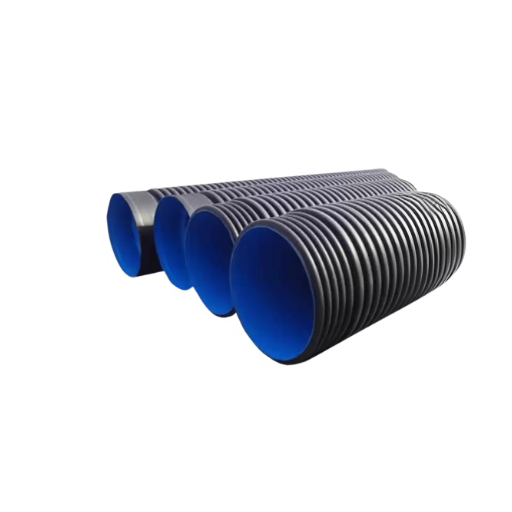
HDPE Pipe’s Resistance to Hydrogen Sulfide and Corrosion
Pipes made from HDPE (High-Density Polyethylene) withstand the stressors induced by hydrogen sulfide (H₂S) gas found in sewer systems. Hydrogen sulfide is formed under anaerobic conditions in wastewater systems and is caustic, especially to metals such as cast iron and steel. Being a thermoplastic polymer, HDPE shows ethylene thermoplastic behavior, which helps withstand chemicals like H₂S, which aids in extending the lifespan of the system with no degradation.
Compared to other piping materials, HDPE does not suffer from electrochemical corrosion from other acids as well as stray current corrosion from urban infrastructure. Endurance is provided by the material’s non-reactive molecular structure, which does not allow H₂S and other sewer gas chemicals to form alterations to the material’s structure. Research has shown that aggressive compositions of wastewater do not compromise HDPE’s industrial mechanical standards, therefore proving suitable use in greater applications.
Also, the ability of HDPE to attack biofilm retards more the oxidation of sulfide that gives rise to acids that corrode such as sulfuric acid. Thus, this feature not only improves the lifespan of the pipelines but also increases the cost-efficiency by lessening maintenance, eliminating downtime, and giving HDPE great potential for use in modern systems for managing wastewater.
Abrasion Resistance of Polyethylene Pipe in High-Flow Sewers
High-density polyethylene (HDPE) pipe has excellent abrasion resistance, especially in high-flow sewage pipes where the mechanical wear and tear from sediment-laden wastewater is particularly strenuous on the pipe surface. Laboratory tests and field studies confirm that compared to concrete or steel, wear rates on HDPE pipes are significantly lower. This can be attributed to the polymer’s inherent impact-resistance due to high molecular weight, which enhances its toughness against abrasive forces.
Flow dynamics analyses proved that sediment-laden turbulent flows containing sharp gravel and sewage sludge, as well as sewage, were not able to erode HDPE over time. The material’s performance is also aided by low surface friction, as particulates can bypass the surface without clogging the pipe. Moreover, the structural integrity of HDPE remains untouched by these extreme conditions; studies show that pipes keep more than 95% of their wall thickness after years of rough operational exposure.
The combination of these factors increases the operational lifespan of HDPE pipes by extending maintenance intervals, decreasing long-term costs associated with asset management. In combination with proper installation techniques, HDPE’s unparalleled resistance to physical and chemical attack makes it the best choice for high-flow sewer systems.
How HDPE Pipe Handles Shifting Soils in Sewer Applications
The flexibility, toughness, and integrity of High-Density Polyethylene (HDPE) pipes make them uniquely suitable for dealing with problems brought about by shifting soils in sewers due to their soils’ flexibility. The structural flexibility of HDPE pipes is one of their greatest technological advantages, identified as ductility, or the ability to bend without breaking. Such flexibility permits the accommodation of movements due to soil settling, seismic vibrations, or expansive clay formations.
One other significant strength of shifting soils regarding HDPE pipes is the use of fused joints. Heat fusion welding guarantees welds of absolute integrity that are free from leaks and do not suffer the complications of joint separation common with mechanical coupling systems used in conventional materials. This guarantees a closed system that can endure severe high-pressure forces from mechanically induced soil pressure movements over time and soil shifts.
Moreover, these pipes are manufactured to have great resistance to environmental stress cracking, one of the most hostile forms of deterioration in changing soil conditions. With such a design, the risk of failure is further reduced even under the most adverse conditions of stress in unstable soils. With a design life exceeding 50 years, HDPE sustains modern sewer systems’ demand posed by dynamic soil conditions most efficiently and economically.
References
Frequently Asked Questions (FAQs)
Q: What are the key advantages of HDPE pipe for wastewater systems?
A: HDPE pipe for wastewater offers numerous advantages over traditional materials. It features exceptional chemical resistance, particularly against hydrogen sulfide gas, which is common in wastewater environments. HDPE has a long life expectancy (50-100 years), excellent leak-free fusion joints, flexibility that reduces the need for fittings, and corrosion resistance. High-density polyethylene water and sewer pipes are also environmentally sustainable, with lower carbon footprints than materials like DIP (Ductile Iron Pipe). Additionally, they offer superior flow characteristics and can withstand ground movement better than rigid pipe alternatives.
Q: How does an HDPE pipe for wastewater perform in directional drilling installations?
A: HDPE pipe excels in directional drilling installations due to its flexibility, durability, and fusion-welded joints. The high tensile strength of PE pipe allows it to be pulled over long distances without damage. Its flexibility permits it to follow curved boring paths that would be impossible for rigid pipes. The fusion-welded joints create a monolithic, leak-free system with strength equal to or greater than the pipe itself. This makes HDPE particularly valuable for crossing waterways, roadways, or environmentally sensitive areas where trenching isn’t feasible for private sewer and wastewater systems.
Q: Can HDPE pipes be used for both wastewater and potable water applications?
A: Yes, HDPE pipes can be used for both wastewater and potable water applications, though they must meet different specifications for each use. For potable water, HDPE pipes must comply with NSF/ANSI Standard 61 and typically use materials with specific color coding and markings. For wastewater and sewer applications, different grades of HDPE are used that meet ASTM standards specific to waste handling. While the basic material (polyethylene) is the same, the manufacturing processes, additives, and quality control measures may differ between pipes intended for drinking water versus those designed for wastewater transport.
Q: What sizes of HDPE pipe are available for wastewater systems?
A: HDPE pipe for wastewater systems is available in a wide range of sizes to accommodate various project requirements. Solid-wall HDPE pipe typically ranges from 1/2 inch to 63 inches in diameter. Corrugated HDPE for storm drain and larger sewer applications can reach up to 120 inches in diameter. The pipe is manufactured to various dimension ratios (DR values) that determine wall thickness relative to diameter, with common DRs including DR 17, DR 11, and DR 7.3. This diversity in sizing makes HDPE suitable for everything from small residential connections to major municipal wastewater and sewer projects.
Q: How has HDPE pipe in wastewater systems evolved in recent decades?
A: HDPE pipe in wastewater systems has seen significant advancements in recent decades. Improvements in resin formulations have led to enhanced chemical resistance, particularly against hydrogen sulfide gas. Manufacturing innovations have allowed for larger diameters and more consistent wall thicknesses. The development of more sophisticated joining methods has improved installation efficiency and joint integrity. Modern HDPE pipes now feature improved UV resistance, better pressure ratings, and enhanced resistance to slow crack growth. Additionally, the industry has developed standardized testing protocols and quality control measures to ensure greater reliability and the exceptionally long life expectancy that modern wastewater systems require.
Q: What joining methods are used for HDPE pipe in sewer applications?
A: Several joining methods are employed for HDPE pipe in sewer applications, with the most common being heat fusion techniques. Butt fusion joins pipe ends by heating them and pressing them together, creating a joint as strong as the pipe itself. Electrofusion uses fittings with embedded heating elements. Socket fusion is used for smaller diameters. Mechanical connections, including flanges, mechanical compression fittings, and transition fittings to other materials, are also available. For corrugated HDPE storm drain applications, bell-and-spigot joints with gaskets are common. The selection of joining method depends on pipe size, pressure requirements, and whether the polyethylene water and sewer pipe installation is temporary or permanent.
Q: How does the cost of HDPE compare to traditional materials for wastewater and sewer projects?
A: While the initial material cost of HDPE may be higher than some traditional materials like concrete or PVC, the total installed cost often makes HDPE more economical. HDPE’s lighter weight reduces transportation and handling costs. Its flexibility decreases the need for fittings, and its durability lowers maintenance expenses. Installation methods like directional drilling can significantly reduce trenching and restoration costs. The long-term value is enhanced by HDPE’s resistance to corrosion and chemicals, which extends its service life beyond many alternatives, including DIP (Ductile Iron Pipe). When considering lifecycle costs, HDPE pipe for waste typically offers better value due to reduced maintenance requirements and longer service life.



